You are a druid. You are a protector of the wilderness, a keeper of the magical secrets of your creed, and a conjurer of nature’s allies. You may adventure with many non-druids these days, but you once received training from a druid circle, an order of like-minded defenders of the wilderness. There, you trained in the secret Druidic language, the art of Wild Shape, and in magic spells unknown to even the most devout clerics or studious wizards.
This guide will give you an overview of the D&D druid, how to play a druid, and the different features you'll acquire as you level up. We'll be focusing on material from the Basic Rules and Player's Handbook and only discussing early-level options so as not to overwhelm you. Every druid character has a different personality, a different role they want to fill in the party, and different tactics in combat. While this guide will posit some good spells and traits to choose when building your druid, there are plenty of options that may better support your character concept.
Building a D&D Druid
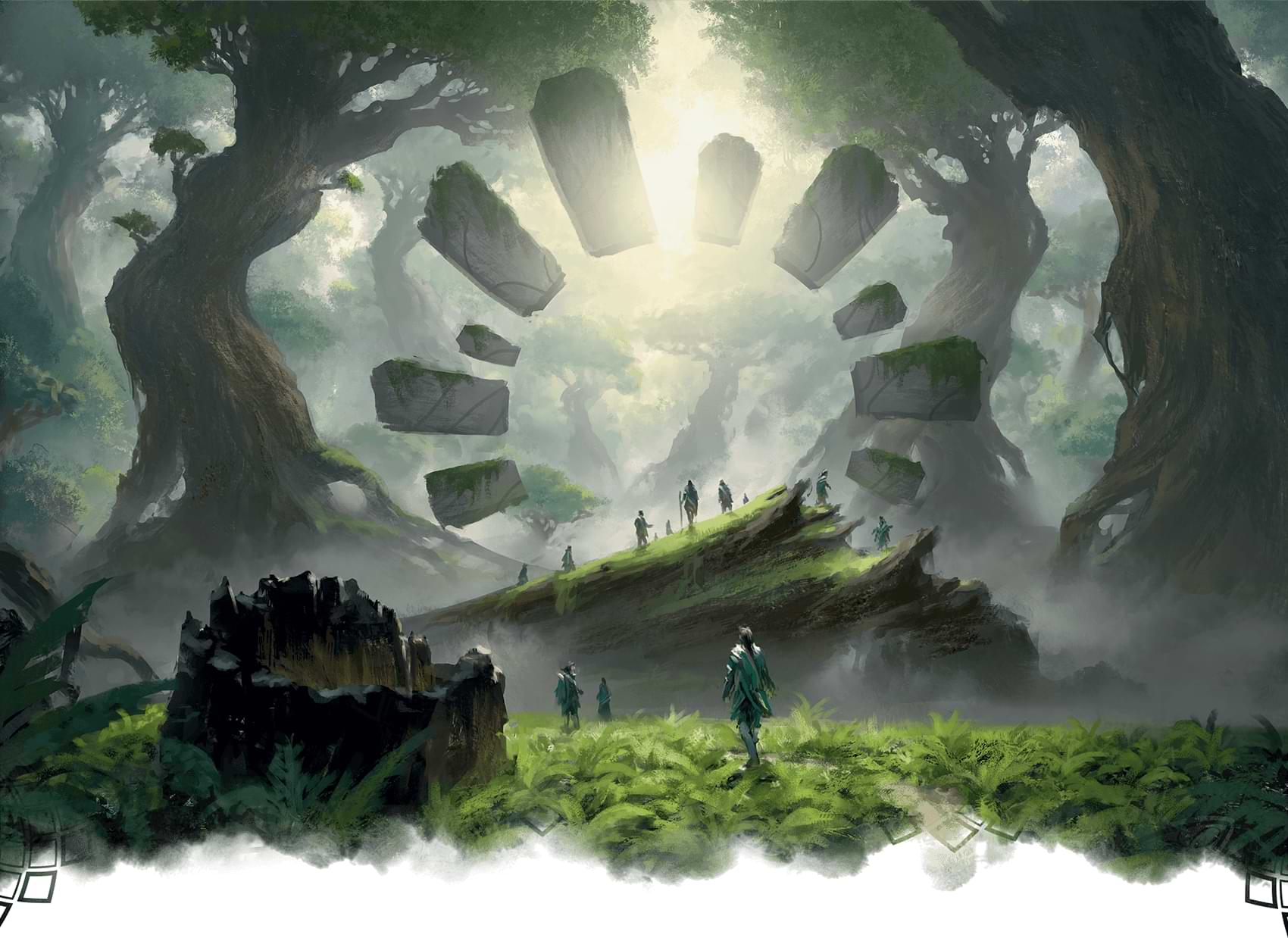
When you're ready, head over to D&D Beyond's character builder. Below, we'll discuss the options you'll be presented during your druid's character creation.
Step 1: Choose a Species
While characters of any species can be a good druid, the most powerful druids tend to be from species that improve your Wisdom score. Wisdom is your most important ability score because it determines the power of your spells and your other druidic powers, and it also helps you make Wisdom (Survival) checks, a vital skill for anyone living at the edges of civilization.
- Wood elves make excellent druids because they grant you a bonus to Wisdom while also providing a host of racial traits that make them perfectly at home in the woodlands, like Darkvision, Fey Ancestry, Mask of the Wild, and Fleet of Foot.
- Humans make interesting druids because they provide a +1 to Wisdom, as well as all their other ability scores. This can be a good pick for a more well-rounded druid who has proficiencies outside of their area of expertise.
- Half-elves are a good choice for druids for similar reasons as humans. They provide a +1 to Wisdom, as well as a +2 to Charisma and +1 to one other ability. They also get some features from their elvish heritage, like Darkvision and Fey Ancestry that can help in dangerous environments.
Step 2: Choose Your Class
Choose druid as your class (unless you're lost and looking for another class guide, then roll a Wisdom (Survival check). This will grant you some class features right off the bat. We'll touch on all of these features in the Druid Class Features section. For now, let's focus on your two skill proficiencies.
- Choose skills that fit the character you want to play. Most druids choose to be proficient in the Survival and Perception skills because they're useful for anyone living apart from civilization and mesh well with their Wisdom focus.
Step 3: Ability Scores
Your ability scores will determine your character's baseline bonuses to all the rolls they'll make in their adventuring career. We're assuming you're using the Standard Array means of distributing your ability scores for the below example.
- Set your Wisdom as 15. This is your primary ability and influences the potency of your most important trait, spellcasting.
- Choose your secondary ability and set it as 14. This could be Constitution if you want more hit points or Dexterity if you want to scout for your party while also improving your Armor Class (AC).
- For your 13, select either Consitution or Dexterity, whichever wasn't already selected using your 14 slot.
- Distribute the remaining abilities as you see fit for your character.
Step 4: Description
Choose any background that fits your character concept. This is a chance to be creative! How did you become a druid?
- Were you an acolyte of a god of nature that chose to defy organized religion?
- Were you a criminal that stole druidic secrets?
- Or were you a soldier saved from death in the desert by a traveling druid?
Step 5: Equipment
Finally, determine your equipment. For an easy selection, click on “EQUIPMENT” when prompted to “Choose EQUIPMENT or GOLD”.
- Given the choice between a wooden shield or any simple weapon, you should probably pick a wooden shield, as the shield’s +2 bonus to AC is incredibly important, especially at low levels. A simple weapon like a light crossbow could be useful if you want to hang back and fight from afar.
- When choosing between a scimitar or any simple melee weapon, a scimitar is the best choice in terms of raw damage output. However, a quarterstaff is also an excellent choice if you plan on using the shillelagh cantrip in combat.
- Your last choice, your pick of druidic focus, is a pure flavor decision. Pick one that feels good to you!
Druid Class Features
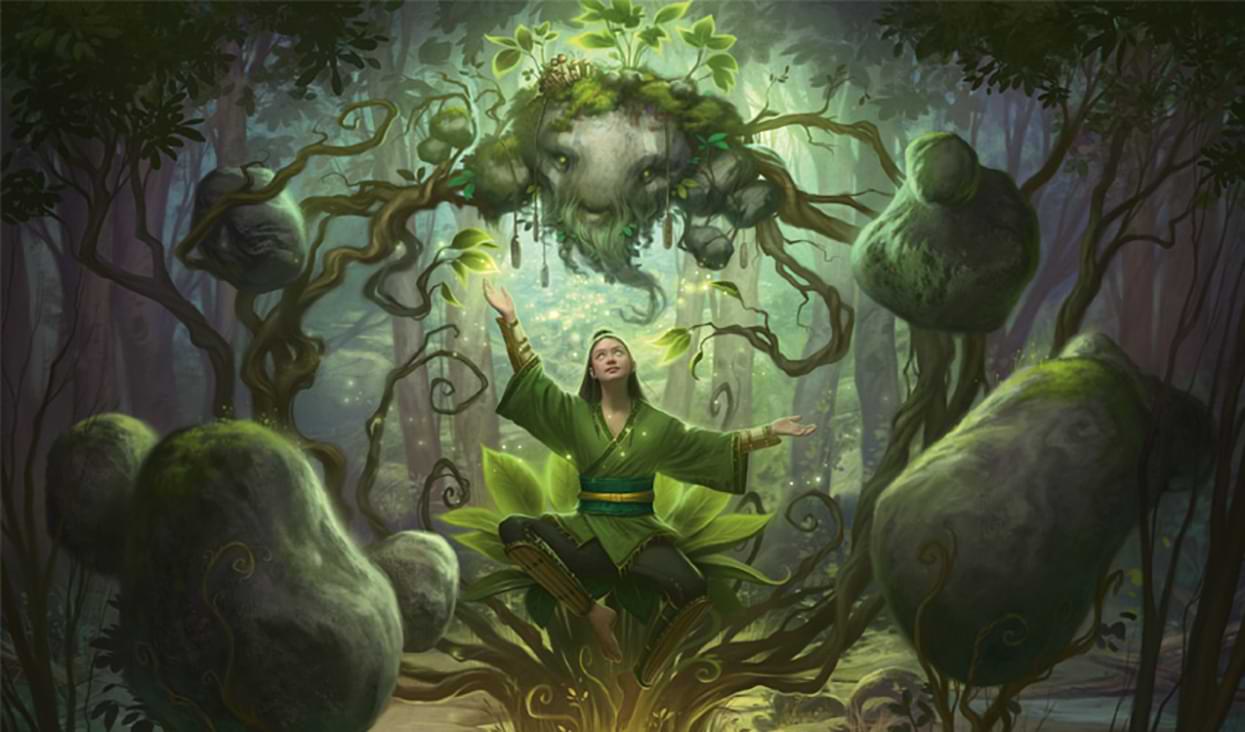
Below, we'll cover your druid's class features up to the 5th level, where the introductory adventures Lost Mine of Phandelver and Dragons of Stormwreck Isle take you.
1st Level
Druidic: You learn the secret language of the druids that can be used to leave other speakers of the language hidden messages. While this isn't guaranteed to come up in a campaign, it could be crucial in arcs relating to other nature-magic users. The usefulness of this feature depends on how much effort you and your Dungeon Master put into utilizing it, so if you want to use it more in your games, consider brainstorming some ways to bring it into your campaign with your DM.
Spellcasting: Druids know all of the spells on the druid spell list but can only prepare a certain number of them per day. You can change your prepared spells whenever you complete a long rest, but it helps to have a basic loadout of spells that you can always fall back on when you don’t want to spend time and energy hand-tailoring a spell list to the day’s unknown challenges. For our favorite druid spells, check out the Druid Spells section of this guide!
2nd Level
Druid Circle: You get to choose a druid circle. You can access the Circle of the Land at no cost in the Basic Rules and there is one more druid circle available in the Player’s Handbook (Circle of the Moon). We'll discuss these in a bit more detail in the Druid Subclasses section.
Wild Shape: You gain the ability to transform into certain animals twice per long rest. This is an incredibly useful ability that can grant you extra power in combat, mobility to access hard-to-reach places, and the opportunity to sneak into places you normally wouldn't be allowed. At 2nd level, you can only transform into beasts of CR ¼ or lower, and your beast shape can’t have a flying or swimming speed, but that will improve as you level up. This ability has a lot of mechanics around it, so if you're looking for a more in-depth guide, check out our Druid 101: Wild Shape Guide!
4th Level
Wild Shape Improvement: Your Wild Shape improves, allowing you to transform into beasts of CR ½ or lower, and your beast form can now have a swimming speed, but still it can’t have a flying speed.
Ability Score Improvement (ASI): You also gain an Ability Score Improvement, which can be used to increase your Wisdom score by 2. This will increase your Wisdom modifier, allowing you to prepare one additional spell and make your spells more potent. You can also forgo this ability score improvement and choose a feat, which is a new permanent ability that can further customize your build. Feats are optional rules not covered within the Basic Rules, so talk to your DM before you choose one.
Druid Spells
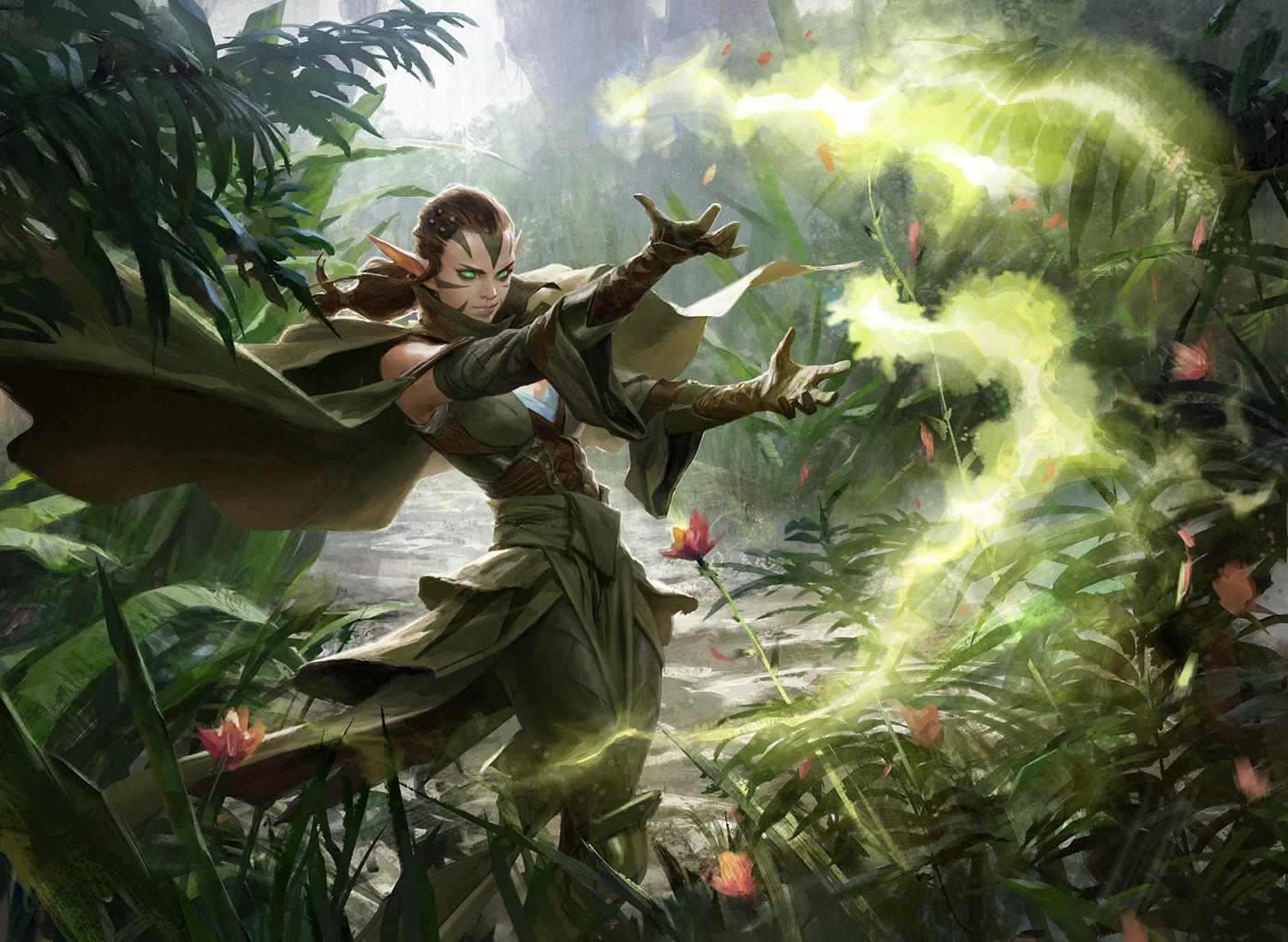
Druids are a full caster class, meaning they get spells all the way to 9th level. Now, there may be some confusion about which level of spells you can access at which level. Clarification for this can be found on The Druid Table, which shows what class level you gain access to certain levels of spells. So, at 1st level you can access 1st-level spells and cantrips, at 3rd level you can access 2nd-level spells, at 5th level you can access 3rd-level spells, and so on.
You can prepare a number of spells equal to your Wisdom modifier plus your level in this class. (See the “Spellcasting” section of the druid class in the Basic Rules if you need more information.) Here are some options you should take a look at:
Cantrips
- Guidance: is an incredible support cantrip that can be used on your allies (and yourself) whenever an ability check comes up. As long as you're within touching distance, you can give the roller an extra 1d4 to their result!
- Produce flame: It's no fire bolt, but it's ranged, fire damage that can also be used as a light in the dark.
- Shillelagh: If you want to run with more of a melee druid brawler, this is the cantrip for you. It allows you to attack with your Wisdom modifier instead of Strength, which means you don't have to divert resources away from your primary ability.
- Thorn whip: Decent damage and range but the main reason to take thorn whip is all the shenanigans you can pull. Enemy on the other side of a pit? Hit them with a thorn whip and pull them in!
1st-Level Spells
- Charm person: If you ever need to convince or get passed a humanoid creature, this can be an indispensable resource.
- Cure wounds: Solid 1st-level healing. Restores more hit points than healing word but requires touch and takes an action.
- Entangle: Trapping people in vines is fun and very druidic.
- Faerie fire: Great support option. Reveal pesky invisible enemies and give your party advantage on their attacks!
- Fog cloud: Need to make an escape? Smoke bomb!
- Healing word: Less potent healing than cure wounds, but it can be critical when you have a downed party member that you can't reach.
- Speak with animals: What kind of druid would you be if you couldn't converse with woodland critters?
- Thunderwave: Getting swarmed by enemies? Push 'em back!
2nd-Level Spells
- Barkskin: This is a great spell to cast before you go into Wild Shape so your beast has a higher AC and is harder to hit.
- Enhance ability: Got an important ability check coming up? Enhance ability offers buffs to any of your or a party member's abilities!
- Heat metal: One of the druid's most potent damage spells. If an enemy is wearing metal, you can make them hurt for it.
- Hold person: Extremely potent battlefield control option against humanoid targets.
- Pass without trace: Sneaking somewhere with your party? How does a +10 to Stealth for everyone sound?
3rd-Level Spells
- Call lightning: Channel your inner Storm from X-Men and strike your foes with blasts of lightning!
- Conjure animals: Conjure woodland creatures to come to your aid. Everyone's tough until two brown bears show up to the party.
- Dispel magic: Not the most exciting option, but as a full caster you might be required to navigate magical traps.
- Plant growth: The epitome of a druid spell. Hamper your foes with overgrown foilage or spend 8 hours and enrich the land around you!
Druid Subclasses
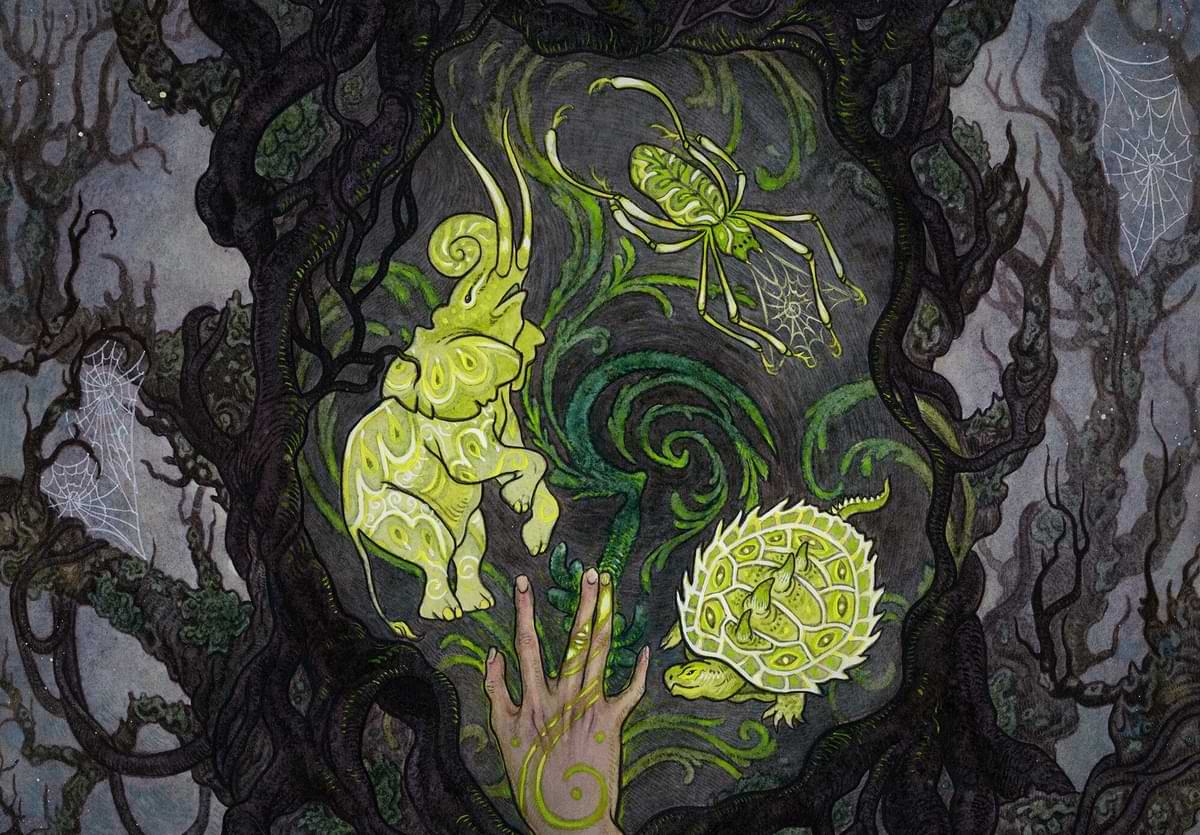
Thanks to their wide variety of spells and shapeshifting abilities, druids have various roles they can fill in their adventuring party. A druid focused on offense might use spells to annihilate their foes, while using Wild Shape to flee from enemies or find an advantageous position. On the other hand, druids focusing on supporting their party may use their magic and class features to heal their allies’ wounds and bolster their power.
Until you choose your Druid Circle (hereafter referred to as your subclass) at 2nd level, your playstyle will be very similar no matter what role you want to fill in your party, since you only have a very small selection of spells available to choose from. You can use this “undeclared” time at 1st level to get a feeling for your party’s composition and discover what your fellow players want to do with their characters.
Circle of the Land: At 2nd level, you gain continuous access to powerful spells, including some not on the typical druid list. These druids draw their power from a specific biome; druids bound to the Desert, Forest, and Mountain lean heavily into pure offense, while druids of the Arctic, Coast, and Swamp gain some additional defensive power, and druids of the Grassland and Underdark gain power that makes them better at moving stealthily.
Circle of the Moon: Gain access to powerful new forms to use with your Wild Shape feature, like powerful bears and jungle cats, and even into elementals at later levels! Since you assume the the physical statistics of a creature you transform into, you can gain massive amounts of hit points through Wild Shape, making you one of the most durable characters in the party.
Get More Options for Your Druid
If you're looking for more Druid Circle options, check out these additional subclasses found in various sourcebooks:
| Druid Circle | Description | Source |
| Circle of Dreams | Heal allies and traverse the borders between realms with Fey magic. | Xanathar’s Guide to Everything |
| Circle of Spores | Vanquish your foes with the power of decay. | Tasha's Cauldron of Everything |
| Circle of Stars | Channel the magic of the stars into powerful new abilities. | Tasha's Cauldron of Everything |
| Circle of the Shepherd | Summon spirits to aid you in battle. | Xanathar’s Guide to Everything |
| Circle of Wildfire | Harness the power of flame and get a fiery companion. | Tasha's Cauldron of Everything |
How to Play a Druid
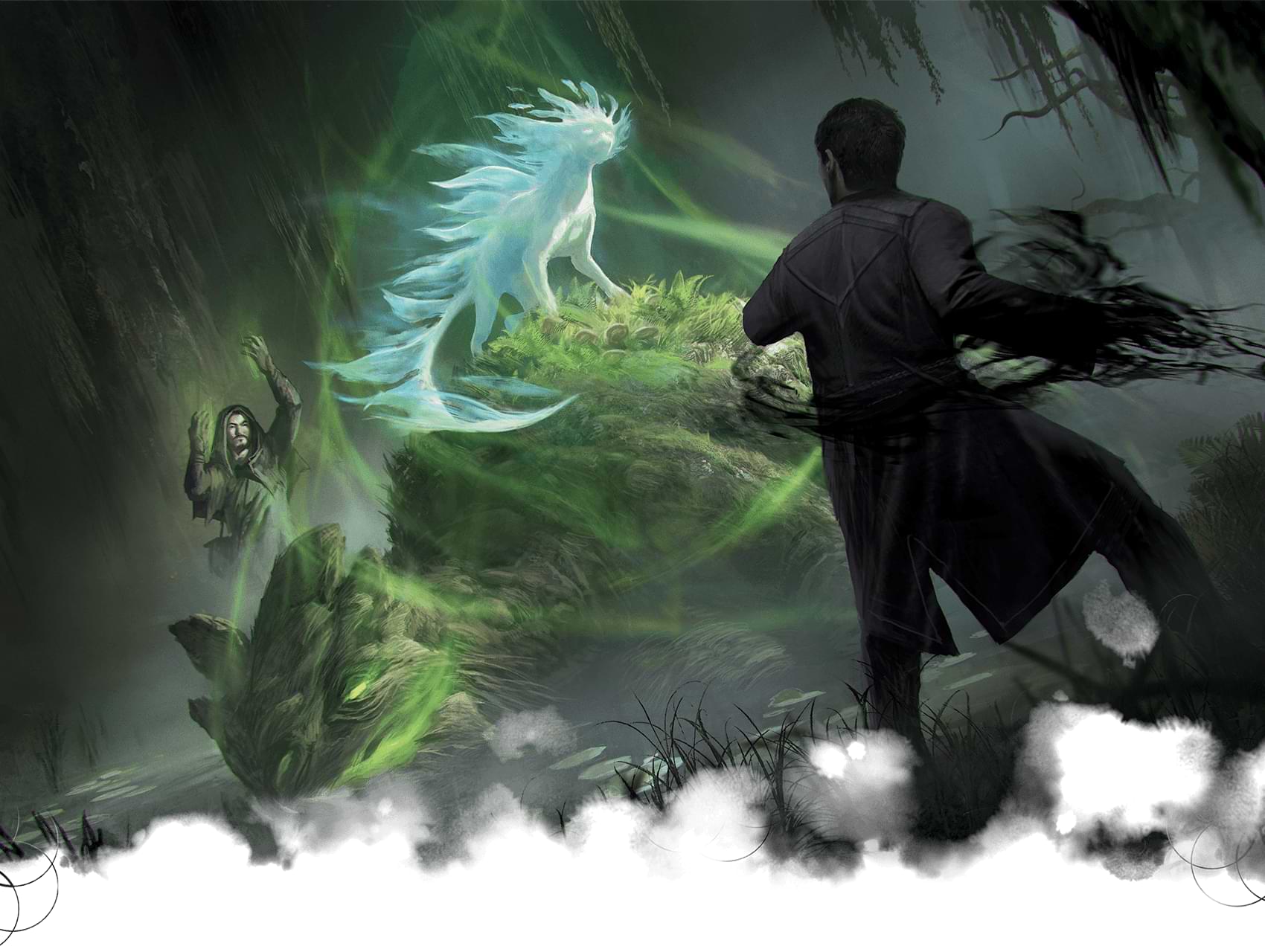
As a druid, you have a near-unmatchable pool of resources to draw from. Your combination of spellcasting and Wild Shape allows you to have an answer for most problems. Need to sneak into somewhere? Turn into a spider. Need to defeat a powerful foe? Call some lightning down on them. Need to help a village that is suffering from drought? Control the weather and enrich the soil.
Your primary worries will be resource management. You won't want to use Wild Shape willy-nilly because you only get two uses per short rest. Your spell slots don't recharge until you take a long rest and there isn't any way to regain them on a short rest like wizards or warlocks unless you've chosen the Circle of the Land. You'll also want to be cautious of your hit points because druids only have a d8 hit die and can't wear metal armor or shields, which means they can be at risk of succumbing to a foe who can dish out damage. Luckily, your Wild Shape grants you access to an additional pool of hit points, so it might be worth hanging on to a usage of this feature for emergencies.
If you're looking to enhance your druid's nature magic, check out our guide for the best magic items for your druid. That way, you'll know what to ask for when a noble is thanking you for saving their city from famine.
Making Your Druid Your Own
Druids are a versatile class with the ability to fight on the front lines, weather blows that would kill any other character, and cast spells like the most powerful of wizards. There are so many ways to build a druid, you could have a party of all druids and none of them would be quite the same.
The best way to differentiate one character from another is to imbue them with a personality. Not just by building a unique backstory and choosing a flavorful background, but by choosing spells and class features that fit your character concept, even if they aren’t strictly the most powerful option. While most casters can dish out damage with lightning, most can't speak with animals or nurture the land around them. If you want your druid to feel like the nature-loving friend of the earth they are, it might be necessary to forgo more powerful, destructive options to deepen your connection to the natural world.
James Haeck (@jamesjhaeck) was formerly the lead writer for D&D Beyond. They have contributed to a number of D&D releases, including Waterdeep: Dragon Heist, Explorer's Guide to Wildemount, and Critical Role: Call of the Netherdeep. They are living their best druid life in in Seattle, WA with a veritable jungle of houseplants.
This article was originally published on May 31, 2018, and was updated on March 3, 2023.








-
View User Profile
-
Send Message
Posted Jun 18, 2018Nice job james, love it.
-
View User Profile
-
Send Message
Posted Jun 18, 2018Just quickly wanted to point out that hand crossbows are marital weapons rather than simple ones, but light crossbows would work!
-
View User Profile
-
Send Message
Posted Jun 18, 2018You should do a Warlock 101
-
View User Profile
-
Send Message
Posted Jun 18, 2018But a scimitar is made of metal which druids can't use
-
View User Profile
-
Send Message
Posted Jun 18, 2018Thi is really good but it doesn't mention conjure animals, one of the best druid spells in the game. you can deal an average of 103 damage a round with it.
-
View User Profile
-
Send Message
Posted Jun 18, 2018Not true. They won't wear armor or use shields made of metal. It's a weird inconsistency, and there's about 400 different flavor spins on their weapon selection/armor taboos.
Also, who says your scimitar is made of metal? It's just a type/shape of sword. Could be made out of magic obsidian, or sharpened ironwood, or whatever. Flavor however you want.
-
View User Profile
-
Send Message
Posted Jun 18, 2018Thanks James, I'm happy to see most of my choices are in line with your suggestions, I did take spike growth vs plant growth as a Circle of the Moon Druid. Barkskin with was something I missed. And at 5th level, took Conjure Animals which can be tricky (you'll want to work your DM on how to use).
-
View User Profile
-
Send Message
Posted Jun 18, 2018The idea of taking Sleet Storm over Conjure Animals as a level 5 Circle of the Shep. druid seems laughable. Like, why would you not get the spell that does the thing the subclass is designed to do?
-
View User Profile
-
Send Message
Posted Jun 18, 2018He’s doing them in alphabetical order. Monk’s next. Warlock will be... actually not last, he said in a reply to my comment in a previous article Blood Hunter would probably be last.
-
View User Profile
-
Send Message
Posted Jun 18, 2018Or an iron fish they are magnetically attracted to rocks wait something is wrong.
Also were golden gods
-
View User Profile
-
Send Message
Posted Jun 18, 2018Another great 101 article! Well done.
-
View User Profile
-
Send Message
Posted Jun 18, 2018A fair point, and one well worth addressing. I opted to omit this spell from the Support spell suggestions for several reasons. Most importantly, this is a 101 guide, and conjure spells are notable for being newbie-unfriendly, for both players and DMs alike. It's a great spell, especially for Shepherd druids, but I would hesitate to recommend it to anyone who lacks a strong grasp of not just D&D's rules, but also a sense of how to take their turns quickly and avoid hogging the spotlight.
-
View User Profile
-
Send Message
Posted Jun 18, 2018https://www.dndbeyond.com/posts/192-fighter-101-a-beginners-guide-to-heroic-combat
-
View User Profile
-
Send Message
Posted Jun 18, 2018Actually, monk is next. James did all 4 basic classes first (cleric, fighter, rogue, wizard), so Fighter 101 is already published.
-
View User Profile
-
Send Message
Posted Jun 19, 2018I'm sure they'll get it to soon. I'm excited for that one though, so hopefully it's next.
-
View User Profile
-
Send Message
Posted Jun 19, 2018This is awesome!!!!!
Thank you for this!
-
View User Profile
-
Send Message
Posted Jun 19, 2018Thank you, great article
-
View User Profile
-
Send Message
Posted Jun 19, 2018A fair point, and one well worth addressing. I opted to omit this spell from the Support spell suggestions for several reasons. Most importantly, this is a 101 guide, and conjure spells are notable for being newbie-unfriendly, for both players and DMs alike. It's a great spell, especially for Shepherd druids, but I would hesitate to recommend it to anyone who lacks a strong grasp of not just D&D's rules, but also a sense of how to take their turns quickly and avoid hogging the spotlight.
Agreed. Even as an experienced player and DM, either when I play as a druid, or DM a game with one, I tend to ask my players to not use any conjuration spells that conjure more than one (or two maximum) extra creatures on the board. I despise the fact that the PHB says "your DM will have X creature stats ready when you summon it", because 9 times out of 10, the player has not told me they had the spell prepared, so it adds on an additional 10 minutes trying to look up the stats, write them all down, and keep track of additional actions and health points during combat.
Conjuration spells (ESPECIALLY conjure animals...which at higher levels can summon up to 16 additional creatures...give me a break) are AWFUL in terms of slowing down combat to an absolute slog. So for the sanity of my DM, I do not use them when I play a druid, and for my own sanity, most players understand why I hardly ever allow those spells in my own games I DM. And if they argue, I just let them keep track of all their animal stats when they insist on using it, and they quickly realize how much of a major pain it is.
-
View User Profile
-
Send Message
Posted Jun 19, 2018Valid. I agree that the Conjure X spells are all complex, because you basically become a 2nd DM with how many characters your running at once and it can really bog things down.
With that said, IDK the best way to balance it. Shepherds are designed to overload on summoning, so maybe it should have been something you mention but don't suggest taking in a 101? "Shepherds also exist, but they're very difficult to run for new players and this writer would not recommend a novice player taking this subclass because you may not be able to take full advantage of their strengths". Put them in the 102 or 201 druid article :D
-
View User Profile
-
Send Message
Posted Jun 19, 2018I hear you. I really do. I think that working out Summon spells, how they work in your DM's world, and what is "the best way to use them" BEFORE you cast the spell is important.
But banning them outright is a bit much. You could easily say "You're only ever able to use the top 2 summon options in regards to number of creatures summoned, and you need to have the stats ready to go when you summon the creature or else the spell fails because we don't have time for you to be looking things up mid-combat" and most of the problem is solved. Adding 1 or 2 extra creatures to a fight isn't going to become a slog IMHO. The problem isn't the spell, it's players trying to do something cool that unfortunately pulls the whole game down. Also, (and I'm not being paid for this) DnD Beyond really helps because it tooltips a bunch of creatures on the spell description for speed of finding their stats/abilities.
I also see the complaints about the spell from DMs that feel like "it's hard to balance encounters when I have a player who can raise an army for a level 3 spell slot". This can be especially true for land druids since they get spells back with a short rest and can just keep blowing level 3 slots on wolf packs all day. To this one, I just say that it's a concentration spell, and attack the summoner is a pretty reasonable tactic the bad guys would use
TL;dr- the spell is only as problematic as the player who's casting it.